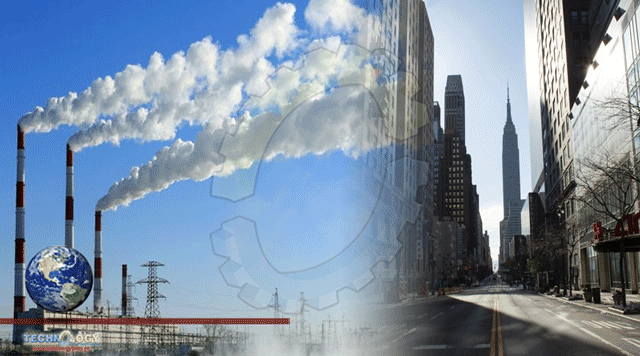The devastating coronavirus pandemic had a notable side effect early on: less air pollution. Satellites monitored the changes over the last year as people stayed at home and factories shut down. With lockdowns easing comes an unfortunate but expected rise in air pollution.

The devastating coronavirus pandemic had a notable side effect early on: less air pollution. Satellites monitored the changes over the last year as people stayed at home and factories shut down. With lockdowns easing comes an unfortunate but expected rise in air pollution.
The European Space Agency said Monday that nitrogen dioxide levels have returned to pre-COVID levels in China. According to the EPA, nitrogen dioxide is mainly traced to the burning of fuel and emissions from vehicles and power plants. The gas is connected to lung irritation, acid rain and hazy air quality.
ESA’s Copernicus Sentinel-5P satellite zeroed in on China and tracked nitrogen dioxide levels there between 2019 and 2021. China implemented its first strict lockdown in Wuhan in January 2020 and soon expanded the restrictions to more areas. Later, other countries followed suit to try to slow the deadly virus.
A dip in air pollution due to the lockdowns appeared in satellite data. “Now, more than one year later, as restrictions have eased, the average level of air pollutants has rebounded and is on the rise again,” said ESA in statement.
The agency released a series of satellite maps showing nitrogen dioxide levels (seen in red) in central and eastern China from February 2019, February 2020 and February 2021. The changes are stark.
ESA Copernicus Sentinel-5P mission manager Claus Zehner said the air pollution rebound was expected, and that while weather conditions can impact nitrogen dioxide concentrations, the lockdowns have played a large role in the fall and rise of air pollution.
The noticeable dip in pollution during the pandemic spurred some lawmakers and environmentalists to push harder for clean air measures — such as clean energy investments and the extension of work-from-home policies — aimed at a more permanent reduction in pollution.
Just as China led the first lockdowns, it has been among the first countries to ease restrictions. The air pollution pattern seen there is likely to be mirrored by the rest of the world. Said Zehner, “In the coming weeks and months, we expect increases of nitrogen dioxide concentrations also over Europe.”
Originally Published at CNET